THIS IS NOT ONLY A SAMPLE APA PERSUASIVE ESSAY, BUT YOU MAY ALSO USE IT FOR THE FINAL IF YOU CHOOSE TO ARGUE MY POINTS ON WHY SLASHER MOVIES SERVE NO PURPOSE AND SHOULD NOT BE MADE.
Visual entertainment has become the medium that it is today by its ability to express various ideas and images for the masses. However, in recent times, movies have pushed this art form in certain directions that have left behind the entertainment value while instead opting for shock value. Nowhere is this truer than in the genre of “slasher movies,” which have been pushed into a direction that serves to only foster an addiction to gore and an amoral expression of love for villains. Thus, it is clear that if the movie industry cannot police itself, then people need to stand up and give it a reason to stop making these unscrupulous movies.
A perfect example to explain the negativity of this phenomenon is Natural Born Killers, the Quentin Tarantino written film that he later disowned after Oliver Stone’s unauthorized changes. In this movie, a television crew follows Mickey and Mallory, a pair of serial killers, through their killings and into the world of just how much America loves the ultra-violent killers that fill its tabloids. Throughout the film, carnage ensues through the destruction of all that should be good and people even beg to be killed by their idol killers while the audience is inundated with a message of depravity packaged in a rock and roll soundtrack. At the end, the killers are still on the loose, justice hasn’t been served, and bodies are piled up with more deaths sure to follow since the “heroes” have escaped. Though this is not true slasher horror, it still allows the observer to look at the industry by using a film that offers offers a clear insight into how modern culture could embrace this love of violence in the way that it does.
While Natural Born Killers was finally released in 1994 after much negative press and discussion of whether it should be released at all, it acts as the end transition of 15 years of celluloid films that begins with Halloween, Friday the 13th, and Nightmare on Elm Street. If the progression of 15 years takes popular culture there, then it is easy to extrapolate where the 15 year anniversary of that movie will take pop culture. However, while there is an ultra and excessive violence in them, the problem with these movies and those that follow them as a whole lie not in the violence, but rather in the walk-away message. To understand this, it needs to be said that violence is not something to be hidden, but it is a part of society that most rational people would seek to avoid. At the most extreme moments, a sane and well-adjusted person will grasp that violence is necessary. The extremely pious St. Augustine even wrote of a theory for just wars. However, in these times, people are not always so religious, but our culture can still be moral. For example, if a country has to go to war against an enemy that it can side against, then violence seems necessary. Thus, in the national psyche, it’s easier to go to war against a Hitler or a Bin Laden than a Saddam Hussein, which in and of itself leads to questions of the moral nature of war and violence. In addition and in clear showing of the gray areas of violence, how much force should be used against criminals by their potential victims is debated in the right to carry and utilize concealed weapons. Even after society catches and convicts felons, in some circles, it still debates the death penalty against them as some savage use of an “eye for an eye” as hypocrisy in that it’s legalizing a government killing someone as punishment for killing or excessively hurting someone else. All the while, this society takes the moral high ground in these issues while it revels like a pig in the celluloid murk as it delights in the brutality of Saw, Scream, and Hostel.
In this necessity for violence, society does need to evaluate and leave itself to think about what violence means. As previously stated, the actual image of violence itself is not the issue. The questions that movies such as A History of Violence presents do seek to express things with a deeper sociological purpose. Without the expressions of violence within, A History of Violence’s expression of violence as a human genetic trait is pointless. The same can be said for the deeper historical significance of Saving Private Ryan. If the reader isn’t emotionally crushed in the barrage of gunfire that bookends the movie in a blanket of grainy and drab colors that are viciously coated in smatterings of red, it is not the movie that it was set to be. The artistic image could not be complete as if done in the trademark way that cartoons such as GI Joe use to make sure that no missile, bullet, or bomb actually takes a human life. It would also not be the same if it followed the style that was used in the TV shows of the 50’s when fake gunfire went off and people fell or clutched themselves to show that they were injured. It is needed to express the grim finality of war’s actual nature. For this, there needs to be a showing that there are no magic words spoken before death. All that exists is the cold finality of the moment and the loss of a human life. There is no other way to show that war is hell. However, a viewer delighting in the Texas Chainsaw Massacre, be it the original or the remake, gets no heroism, no characterization, and just an excessive dose of entrails and blood.
While literature has used the antihero in artistic and humorous ways to focus on people with traits that would be without heroism, movies have transformed the genre in a completely different way by giving the viewer the chance to root for the villain. There is no other purpose for watching Michael Meyers, Freddie Krueger, or Jason than to see them kill helpless teenagers and adults in more and more grotesque ways. As a result, a true bloodlust is created and the viewer is desensitized to this shock and awe. Constant studies into violence prove this. Thus, it is necessary to make sure that while a person knows that violence is real and has many facets, society needs to ensure that people see violence in the right capacities.
One way that society does this is labeling movies as art. A perfect example of this is the Oscar winning film Silence of the Lambs. There is a true mystery here, but somehow, it gets lost from its original intent when it presents evil in a way that romanticizes the villain. Following this, Thomas Harris, the author, wrote his next book Hannibal and got diverted completely into shock value, obviously intrigued by the book’s sale potential, by leaving Hannibal Lecter, his maniacally evil doctor gone to the darkside, to be joined romantically by the former stabilization force that was detective Clarice Starling. This repulsed Jodie Foster, the star of the original movie, so much that she balked on returning for the follow-up role. All the same, the movie commenced without her, and viewers were still allowed their chance to see a character that was once considered art to be twisted into a further metamorphosis of un-necessary gruesome scenes. Clearly, one person’s protest wasn’t enough since society still has a thirst for gore.
In that, society has become so enthralled by this quest for the next great butchering that stars such as Paris Hilton will sign up to be killed in House of Wax. When the filming is done, they even market the film with the tagline that the viewer can “see Paris die.” As more and more movies and movie spoofs come out, the genre is a great way for former child actresses such as Michelle Trachtenberg and Beverly Mitchell to completely reinvent themselves in “unwholesome” ways with such blood-drenched fare as Black Christmas and Saw 2. In this, a new trend of society seems to take place when viewers are further allowed to fulfill some twisted nature where they can see the stars of their childhood terrorized by products of the world’s nightmares.
For this, the concept of fear and a feeling of terror are also not what offend the thinking movie viewer. For this, Aristotle made provisions with his rules for tragedy when he stated, “'Those who employ spectacular means to create a sense not of the terrible, but only of the monstrous, are strangers to the purpose of Tragedy.” Directors who follow these words from Poetics can still envision scenes of shock and terror and do so without the excessive gore that characterizes these other objectionable movies. Nowhere is this done better than in The Sixth Sense when the young boy, Cole, is trapped in a closet with the ghosts that are coming to him in an effort to be relieved of the burdens of their death. Of course, the reader doesn’t know this at the time. Instead, he is fixated on the plight of Cole. While the viewer helplessly watches on as hammering sounds pulsate from beyond the walls. Cole’s mother eventually gets to the protagonist, but not quickly enough to save him from his fright, and for this, the viewer is equally shaken up. In this sense, M. Night Shyamalan perfects the art of what Aristotle and a true artistic director, as opposed to a shock and gore director, would want from his movies.
Nevertheless, the quest for the next big opening weekend money movie goes on and on, but one can’t help but wonder if it should. When the genre lampoons itself with Scream or the lyrics of Camper Van Beethoven’s “Axe Murderer Song” say it all with the lines “Why do axe murderers only attack when you're partially nude or you're taking a bath,” there is nothing left that needs to be said by a new movie with new younger stars to rush to the limelight.
In the face of a culture that is gasping its own last breath of originality, it would seem that there is no corner that hasn’t been covered. Even on some questionably artistic level, the concept of the indestructibility of evil has been done with No Country for Old Men. There is simply no stone left unturned other than to keep promoting shock value and the evisceration of naked co-eds to tantalize its depraved viewers.
As a result, there is no need for another senseless celluloid serial killer to come into existence. If modern society is surely as advanced and civilized as it claims to be with its campaigns for human rights for suspected terrorists, then it can honor itself by just saying no to these films. If this truly is a society that values life, then it will refuse to reward meaningless death with its cash.
Who knows; if society refuses this carnage at one level, then maybe it can just say no to additional senseless violence that is promoted by “gangsta” culture and video games like Grand Theft Auto and Bully. Maybe by just making this one change in popular culture, it will force people to focus on the being happy and attaining the good things in life instead of glorifying the ultimate villains that plague our world with their deviance and criminal nature.
Subscribe to:
Post Comments (Atom)



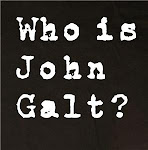





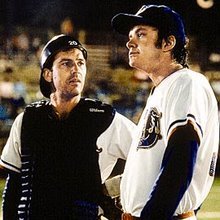










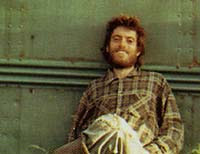






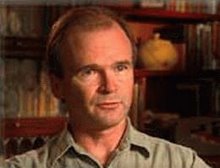


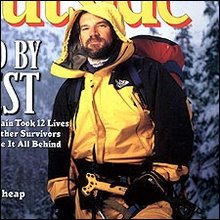




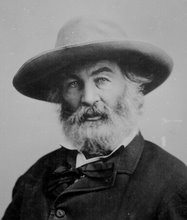

No comments:
Post a Comment